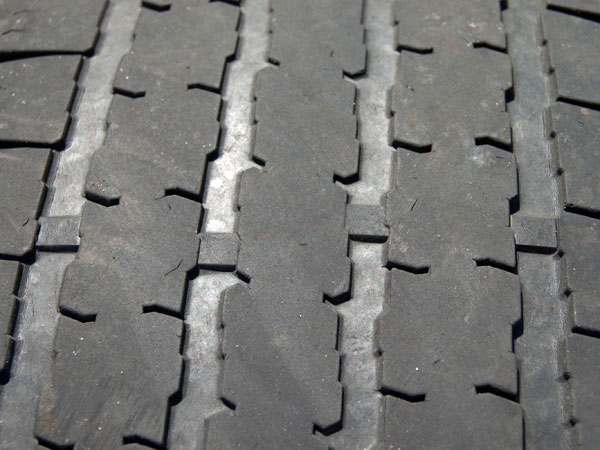lol. I m just being difficult. I always used a coin and my thumbnail. I can pretty much tell by sight the depth. but I have worked with a tape measure for a long time and its second nature to me
To get back to the original question, one unknown here is the OP’s actual driving environment. In my world, starting the winter with even 5/32" on a set of all season radials has always been fine. I’m not sure it would be in Buffalo. There, I’d want good winter tires with no less than 6/32. I’ve never measured the tread on a good set of new winter radials, but I’d guess they’re typically about 8/32".
A tread depth gage is a really dirt-cheap item. It might be a good idea to get one. I even use mine for other depth gage needs where accuracy isn’t critical. They’re more readily available to pull out than my Starrett depth gage. I keep the good stuff in cases in cabinets in my basement, whereas the tread gage is right there in my car’s toolbox.
I had some great snow tires and they had a lot of tread depth left but they had become useless going uphill. I bought some slightly used ones and had no further trouble.
@melott.
It totally depends on tire design, the weight distribution of your car, the terrain you live on and the type of snow you drive in. If you have a low aspect, wide floating tire designed for good summer and rain traction, you could be in for a rude awakening in the first snow. 1 or 2 /32 inch difference from one year to the next makes a big difference in a non dedicated tire. A snow tire will keep traction consistence longer as it wears while driving in snow.
Once you hit deeper or heavy wet snow, there isn’t an all season tire made with wear that will do anything but fill up the treads and be nearly useless. If you are concerned about is tread depth and are not aware of the other factors when you first venture out, just make sure you do a little traction testing, which everyone should do, be fore you venture out too far. Practice braking and accelerating near home before you go go too far from home. Good drivers always do this in severe conditions. It will give you a way of monitoring your traction for the day. The big mistake many inexperienced drivers make, is driving so carefully initially, they can’t monitor their traction. We aren’t saying you don’t do this in a safe area, but it’s the only way you can be sure you and your car can handle such variable traction needs during a any winter event.
yep dagosa, the first thing I do in snow or ice conditions is test out my braking and acceleration limits. not all snow is the same.
Like the picture…well done and it’s worth 1000 words. The wear bars are for legality while the actual traction loss is continuous as everyone here knows already…But, there has to be an enforceable regulation which is where the wear bars come in. IMHO, OP is doing himself and everyone else a service by making this a worthwhile topic. Thanks @Mustangman I think many of us will agree that before the wear bars appear, they were probably very poor in snow.
So the real question remains…How often do you expect to drive on snow-covered roads??
With a little planning, most people can avoid this type of driving…If you Can’t avoid “winter driving” then put on a set of Hankook Optimo H-727’s all-seasons which deliver outstanding performance on snow-packed roads…On dry roads, they deliver a smooth, quiet ride…
I’m constantly amazed by the “consumer reporting” section of newscasts that still use the “penny test” for worn tires when a simple picture shows when you are illegal. (works for cops, too!) Down south, locals will run tires until cords show and are amazed when they hydroplane off the highway. Up north, we take a more detailed look at the tread depth to determine if we can get another winter out of our tires, because we know what trouble it can be to sit in a farm field waiting for a tow. And then we ask questions exactly like the OP posted.
its funny how some people here automatically judge southerners as less intelligent or racist.
people who would get all bent out of shape if someone stereotyped a black or Asian person think nothing of making fun of southerners or Appalachian residents.
I didn’t say southerners were less intelligent. Less “treadwear diligent”, maybe. They just don’t deal with snow so they ignore things like tread depth.
you re right mustang, others have done this tho and your post just reminded me of that. sorry.
wes
It can be a difficult thing to say and be politically correct, but you are right. The area you live in and your own local experience dictates how much attention you pay to your car’s tires and battery too. Have a good friend who winters in Florida and occasionally drives one of his trucks up for the summer. His 2008 Tacoma has tires on it I wouldn’t drive on a dry road, at 40 miles an hour in a straight line. He casually makes the comment…I slow down when it rains.
that s crazy. it rains constantly in florida. pouring rain that covers the highway. I went down there in my mustang when I was young. it had little tread and I hydroplaned whenever it rained and I went over 45mph. having bad tires there was very dangerous when it rained.

